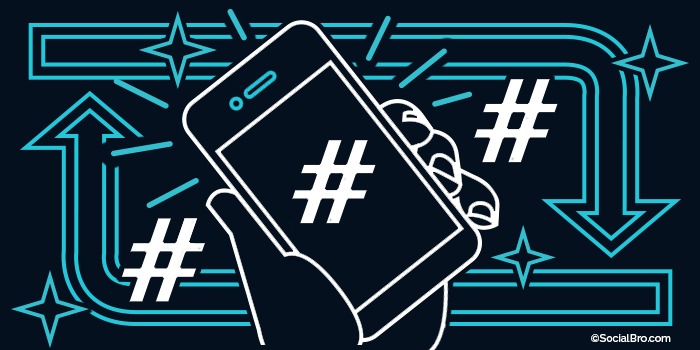How to use hashtags effectively in your social media marketing
So you’ve figured out exactly what sort of Twitter hashtag you should use... What next? There are a number of things you need to consider, from creation to monitoring. We’ve put together six simple steps to show you how to use hashtags effectively in your social media marketing.
1. Get the basics of your hashtag right
Want to know how to make a hashtag that will be effective? Here’s a few points to consider. When creating your own, be aware that overly complex hashtags are not search-friendly. You can hashtag numbers on Twitter but they should be built in to the hashtag, you can’t just hashtag #2022 as it wouldn’t work. If you’re creating a brand specific hashtag, it is possible to trademark a hashtag. Also, this might seem basic, but some special characters (spaces and punctuation) cannot be used in a hashtag, i.e. #Caroline’s Cupcakes could not be used.
2. Test your hashtag before finalising
Test the effectiveness of your hashtag by seeing what’s already out there. The last thing you want after pouring blood, sweat and tears into crafting the most wonderful, witty hashtag in the entire world is to find it’s already associated with something else. Hapless hashtagging is likely to go horribly wrong. It’s fairly likely that whatever hashtag you choose will occasionally be interrupted by a random unengaged user talking about something totally different, however choosing a unique, yet relevant, hashtag for your brand ensures the spotlight remains on your business for the right reasons.
3. Timing is everything
Take it from the smartest man that ever lived: ‘The only reason for time is so that everything doesn’t happen at once.’ Though Einstein never sent a Tweet (as far as we know...), his words are still relevant. There are plenty of tools that can help you schedule Tweets for when nobody is about to chat to your consumers, but be sensitive to when your campaign will have the most impact. The Aussie branch of publisher Random House were accused of sleazy marketing after posting several Tweets tagged #LestWeForget discussing a war-themed book giveaway… during the one minute silence.
4. It takes two to hashtag
Twitter is a two-way street. Hashtags are all about connecting and creating conversation. Hashtags have been beloved since the 80s for connecting like-minded people and, unlike neon leg-warmers, they’re a trend that never got old. Foster engagement and boost awareness by making sure people can use your hashtag organically. Sharpie built an entire community off the back of a simple campaign designed to target a younger audience which used the hashtag #Sharpie and invited people to share their artwork. Mind-numbingly simple, yet it worked like a charm. By aligning their brand with self-expression and creativity, Sharpie spread brand awareness like wildfire. The campaign was so popular that it built an entire community of people talking about each other’s work (as well as the product) and has received over 2,000 submissions since 2011.
5. Use hashtags responsibly
As with all things in life, there are certain rules when it comes to trending topics. You can see them in detail here, but the general message is make sure your hashtags are appropriate and relevant. Hashtagging trending topics to irrelevant Tweets to draw attention to yourself is bad, spamming the Twitterverse with the same hashtag but adding no value is bad, Tweeting about everything trending to drive traffic to yourself is bad. Engaging in any of these bad Twitter habits could lead to a suspended profile and doesn’t provide a meaningful boost in your brand awareness. Behaving like a spammer will only attract spammers.
6. Make your hashtags customizable for a personal user experience
Big brands do hashtags best when they make them personal to their audience. The Women’s Prize For Fiction Twitter campaign made use of a straightforward customizable hashtag, #ThisBook, encouraging people to share their experience with good fiction. The hashtag leaves very little wriggle room for mischief, whilst providing plenty of opportunity for interesting user-generated content (UGC) and has a clear call to action (CTA). Whilst doing a fantastic job for so few characters, the hashtag supplements images of celebrities involved with the campaign and set a clear topic of conversation.
.@lovegwendoline's #ThisBook taught her there's nothing wrong with being eccentric. What did yr #ThisBook teach you? pic.twitter.com/i6CBaVrNcq
— Women's Prize (@WomensPrize) July 2, 2014
All in all, hashtag campaigns should play a crucial role in your social media marketing strategy. Do you have hashtags of your own that have worked well for your business? Share them, we’d love to hear more.







